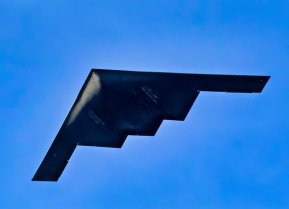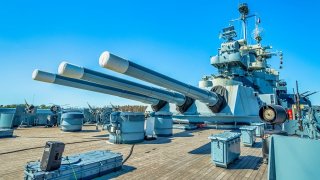U.S. Navy Battleship USS North Carolina Faces an Uncertain Future
The USS North Carolina, an iconic World War Two battleship and the most decorated American battleship of the conflict, now serves as a floating museum in Wilmington, North Carolina. But the mighty warship faces an uncertain future.
Summary: The USS North Carolina, an iconic World War Two battleship and the most decorated American battleship of the conflict, now serves as a floating museum in Wilmington, North Carolina. As a testament to the sacrifices of North Carolinians in the war, it attracts approximately 250,000 visitors annually. However, the battleship faces challenges from climate change, with rising water levels threatening accessibility and, consequently, its financial sustainability and contribution to the local economy. Efforts are underway to protect and preserve this historical monument.
The USS North Carolina is the most decorated battleship to have served in World War Two. Today, it is a floating museum to the memory of the approximately 11,000 North Carolinians who fought and died in the largest war in human history.
However, the venerable warship is facing an uncertain future as climate change and the passage of time threaten its existence.
Climate Change Takes on a Battleship
The USS North Carolina is berthed in Wilmington, North Carolina, and remains a very popular war monument, attracting about 250,000 visitors in 2022. However, climate change is raising the water levels in the river next to the battleship, and the parking lot has nearly flooded. Without access, tourists can’t visit the battleship. Without tourists, the warship can’t survive since it depends on the approximately $3.5 million revenue that comes from these visits to survive. The battleship also fuels the local economy, bringing close to $250 million over a decade.
Local organizations and state officials are making efforts to protect the USS North Carolina and preserve it for the public.
Recently, two historic battleships, the USS Texas and USS New Jersey, went back to the shipyard for important maintenance work. These venerable warships represent another era, and it is important to keep them alive so younger generations can understand what it takes to fight for freedom.
The USS North Carolina
The lead ship of the North Carolina-class battleships, the USS North Carolina, served in World War Two with distinction. The warship was laid down in 1937 and completed in April 1941, just a few months before the Japanese surprise attack on Pearl Harbor forced the United States into World War Two.
In terms of weaponry, the USS North Carolina could carry nine 16-inch (406mm) main cannons, 20 5-inch (127mm) secondary guns, 16 1.1-inch (28mm) anti-aircraft guns, and scores of heavy and light machine guns for air defense.
When it came to defense, the USS North Carolina had 12-inch (305mm) armor in the belt of the ship, 16 inches (406mm) on the main gun turrets, and 5.5 inches (140mm) on the deck to protect against air bombs.
Fully loaded, the USS North Carolina weighed almost 45,000 tons and was about 729 feet long. It could reach speeds of 28 nautical knots (about 32 miles per hour) and had a range of approximately 20,100 miles at moderate speeds. The battleship required 1,800 officers and men to operate.
The USS North Carolina saw extensive service in World War Two. It began its service with a mission to counter the German battleship Tirpitz in the Atlantic Ocean but was soon thereafter transferred into the Pacific. There, the USS North Carolina fought in Guadalcanal, Eastern Solomon Islands, Gilbert and Marshall Islands, Mariana and Palau Islands, Philippine Sea, Iwo Jima, and Okinawa. At one point, she was torpedoed by a Japanese submarine but survived the hit. Following the end of the war, the USS North Carolina was decommissioned, and in 1962, it became a floating museum in Wilmington, North Carolina.
About the Author
Stavros Atlamazoglou is a seasoned defense journalist specializing in special operations and a Hellenic Army veteran (national service with the 575th Marine Battalion and Army HQ). He holds a BA from Johns Hopkins University and an MA from the Johns Hopkins School of Advanced International Studies (SAIS). His work has been featured in Business Insider, Sandboxx, and SOFREP. Email the author: [email protected].
Image Credit: Shutterstock.


